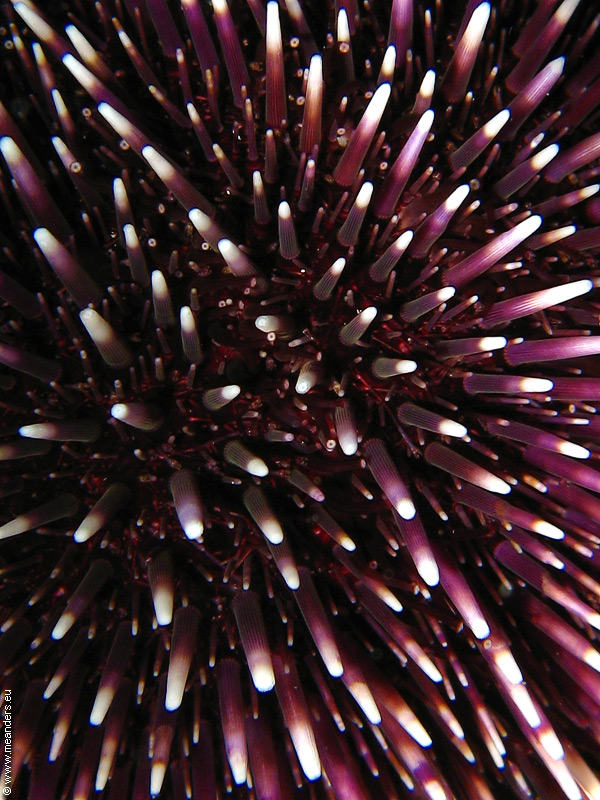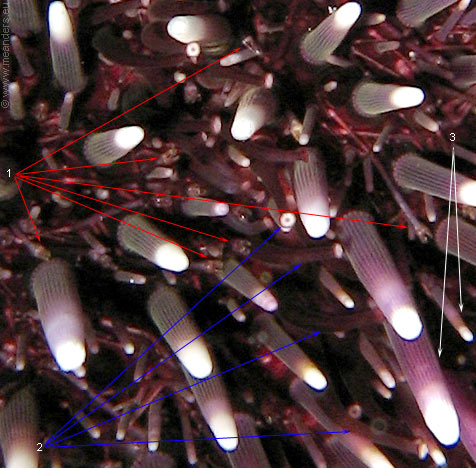
Sea urchins have thousands of slender flexible pedicellariae bearing complex nippers, scissors and grabbers among their spines. Pedicellaria used to drag an obtained food to urchin's mouth, to clean it's back from the drifted garbage or for screening it with pebbles, shells and algae.
Besides that, Echinodermata have developed a special hydraulic locomotor system called ambulacral. It serves for breathing, motion, feel of touch and excretion. Moving and attaching to substrate happens with the help of sucker-ending ambulacral or tube feet coming from inside of the body. By pumping water into the feet's tubes and then by reducing them, Echinodermata are able to stick themselves fast upright and even upside down.
On the zoomed part of the picture beneath the following marked:
1 - Pedicellaria (ending with triple pincers, reminding the blossoming out buds)
2 - Ambulacral tube feet (translucent, ending with white sucker discus)
3 - Primary (long) and secondary (short) spikes
Besides that, Echinodermata have developed a special hydraulic locomotor system called ambulacral. It serves for breathing, motion, feel of touch and excretion. Moving and attaching to substrate happens with the help of sucker-ending ambulacral or tube feet coming from inside of the body. By pumping water into the feet's tubes and then by reducing them, Echinodermata are able to stick themselves fast upright and even upside down.
On the zoomed part of the picture beneath the following marked:
1 - Pedicellaria (ending with triple pincers, reminding the blossoming out buds)
2 - Ambulacral tube feet (translucent, ending with white sucker discus)
3 - Primary (long) and secondary (short) spikes

